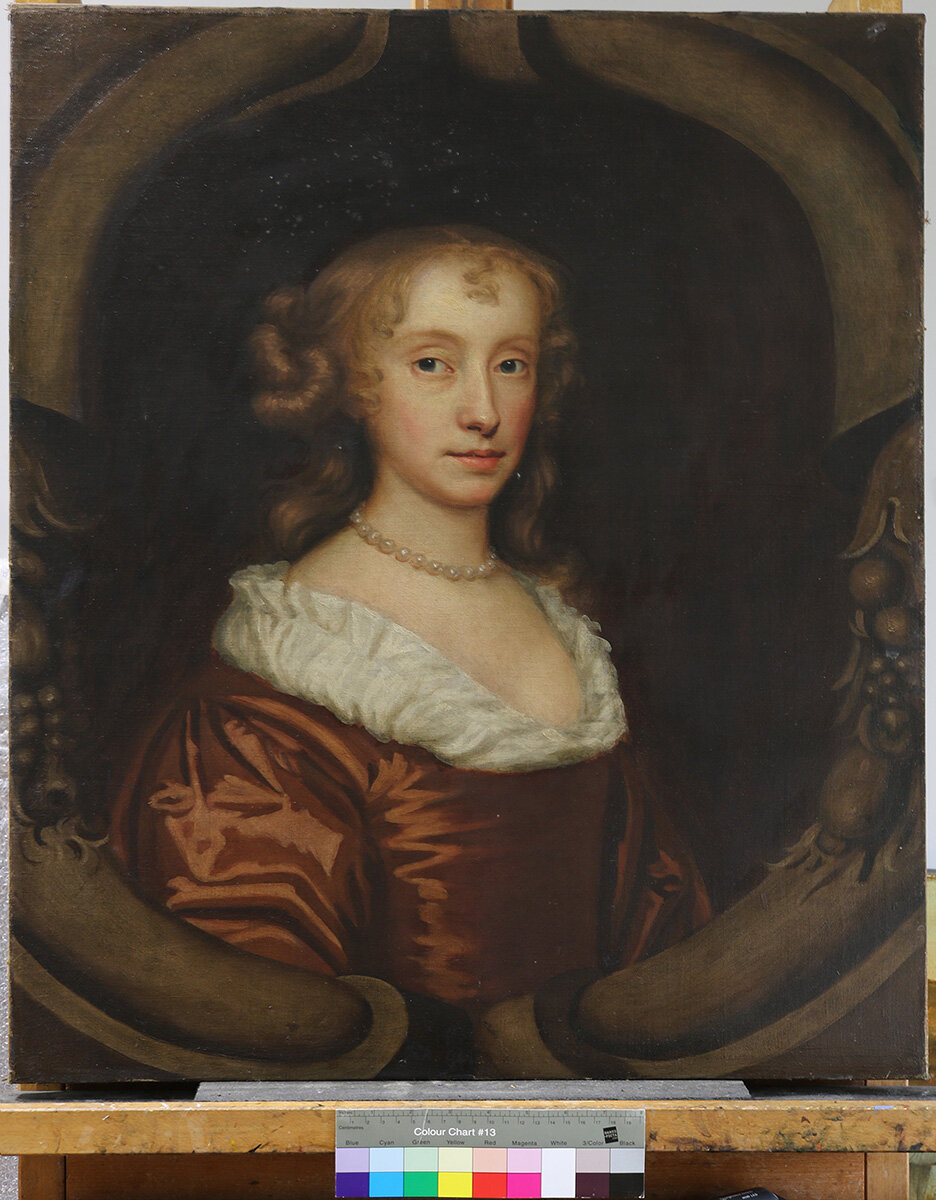Portrait of Lady Vivian, by Mary Beale
Private Collection
The portrait was painted by Mary Beale, a prominent and well established artist in London during the 1670’s - 1690’s.
The painting was in a good condition for its age. It had undergone treatment in the past, including lining, likely to date from the 19th century. The paint layers had suffered from some wear and abrasion. A thin but discoloured varnish layer had imbibed significant dirt, affecting the clarity and tone of the original paint layers. Old overpaint had darkened, notably in the sitter’s face. The brightest highlight on the sitter’s sleeve had also been toned down by later overpaint, flattening the effect of light falling on the satin fabric.
Treatment sought to remove old overpaint, varnish and dirt layers. Retouching is always carried out using stable pigments and synthetic medium, ensuring that the retouching will not darken over time and will be reversible.
Portrait of Lady Vivan, before treatment.
Detail of sitter's face before treatment.
Detail showing build up of discoloured varnish in the texture of the brushwork, creating a mottled effect.
The highlights of the dress which have been toned down through overpaint, flattening the effect of light falling on the fabric.
During varnish removal
Sitter's face during varnish removal revealing the darkened touches of overpaint.
After cleaning, before retouching. It was not possible to safely remove all of the later areas of overpaint. These were addressed at the retouching stage.
After cleaning, before retouching.
Portrait of Lady Vivan, after treatment.









